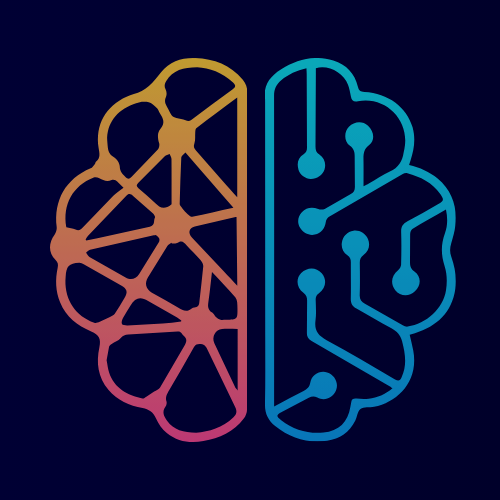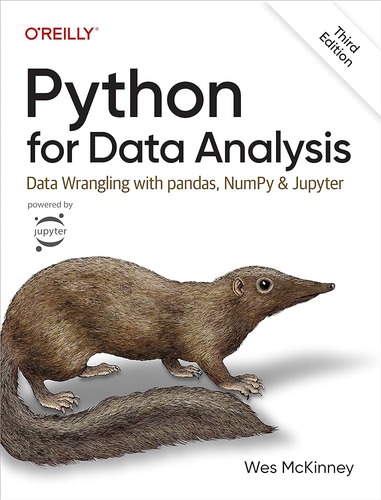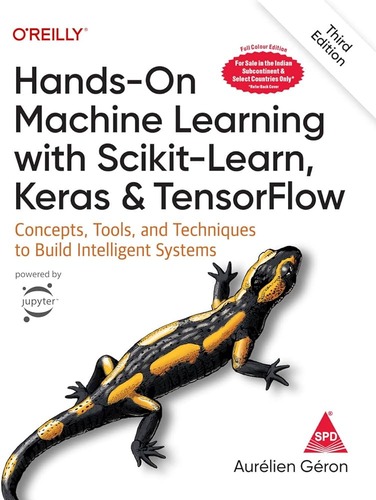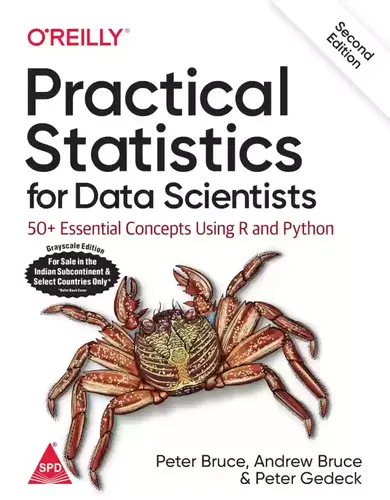Must-Read Machine Learning Books: The Top 3
 neurontist
neurontist
Machine learning is changing the world, impacting areas like healthcare and finance. Whether you're just starting or already working in the field, it's important to keep learning. One of the best ways to do this is by reading key books that explain both the basics and advanced ideas of machine learning.
In this blog post, we'll look at 3 important machine-learning books you should know about. These books will help beginners understand the core concepts and give experts new insights to improve their skills.
Let's get started !!
Book 1
Python for Data Analysis: Data Wrangling with pandas, NumPy & Jupyter
By Wes McKinney

According to the author, this book provides :
This book is concerned with the nuts and bolts of manipulating, processing, cleaning, and crunching data in Python. My goal is to offer a guide to the parts of the Python programming language and its data-oriented library ecosystem and tools that will equip you to become an effective data analyst. While "data analysis" is in the title of the book, the focus is specifically on Python programming, libraries, and tools as opposed to data analysis methodology. This is the Python programming you need for data analysis.
"Python for Data Analysis" by Wes McKinney is a highly regarded resource for anyone interested in data manipulation and analysis using Python. It is based mainly on pandas and NumPy, which are essential and must-learn libraries for data analysis. Whether you're a student, a data scientist, or a researcher, "Python for Data Analysis" is an indispensable resource for mastering the art of data analysis with Python. This book will provide you with the foundation to start your Machine Learning career and is always been on the reading list of data science or ML career aspirants. I highly recommend reading this book if you are preparing for a career in data science or machine learning.
Reviews:
Paulius Sukys: Excellent guide to data analysis with pandas. The author gives a good explanation of the underlying panda's rationale and functionality, providing sumptuous examples and deep dives (in the appendix) with cross-referencing chapters without deviating too far away.
Professionally I use pandas on a biweekly basis and this book has put so many things in place.Barbara: I've been studying Python for about 4 years using books, short online courses and YouTube videos, but wasn't too comfortable with it. This book and Automate the Boring Stuff With Python were the books that made me finally have "the click". I'm more confident now with how I can use Python, his potential and how I can really apply it. Highly recommend it.
Leslie Yong: Wow this is a very good introduction (book) to starting a learning journey on Python for data analysis. It was very comprehensive and well-written for understanding beginners.
Book 2
Hands-On Machine Learning with Scikit-Learn, Keras, and TensorFlow: Concepts, Tools, and Techniques to Build Intelligent Systems, Third Edition
By Aurélien Géron

Book description :
Through a series of recent breakthroughs, deep learning has boosted the entire field of machine learning. Now, even programmers who know close to nothing about this technology can use simple, efficient tools to implement programs capable of learning from data. This practical book shows you how.
By using concrete examples, minimal theory, and two production-ready Python frameworks—Scikit-Learn and TensorFlow—author Aurélien Géron helps you gain an intuitive understanding of the concepts and tools for building intelligent systems. You’ll learn a range of techniques, starting with simple linear regression and progressing to deep neural networks. With exercises in each chapter to help you apply what you’ve learned, all you need is programming experience to get started.
Explore the machine learning landscape, particularly neural nets
Use Scikit-Learn to track an example machine-learning project end-to-end
Explore several training models, including support vector machines, decision trees, random forests, and ensemble methods
Use the TensorFlow library to build and train neural nets
Dive into neural net architectures, including convolutional nets, recurrent nets, and deep reinforcement learning
Learn techniques for training and scaling deep neural nets
In my opinion, this is a must-read for anyone looking to dive into machine learning with practical, hands-on experience. This comprehensive guide walks readers through the entire machine learning pipeline, from understanding basic concepts to implementing advanced deep learning models. The third edition is updated with the latest tools and techniques, ensuring readers have current and relevant knowledge. With clear explanations, engaging examples, and real-world projects, this book is highly recommended.
Reviews:
Ali Shakiba : Very intuitive, clear explanations for the algorithms. I have used this book to design and teach a course on Fundamentals of Data Mining at Vali-e-Asr University of Rafsanjan for undergraduate students. The author made a fantastic job in explaining deep complex topics without going down the rabbit hole of the mathematical foundations. As a part of the course, I used some sections from the mml (mathematics for machine learning) book to cover some preliminaries.
iBado : The best introductory book to this field, it covers pretty much everything you need to start .
angel : Thanks to this book I finished my degree’s final project with honours and got my dream job.
Book 3
Practical Statistics for Data Scientists: 50+ Essential Concepts Using R and Python, Second Edition
By Peter Bruce, Andrew Bruce & Peter Gedeck

Book Description :
Statistical methods are a key part of data science, yet few data scientists have formal statistical training. Courses and books on basic statistics rarely cover the topic from a data science perspective. The second edition of this popular guide adds comprehensive examples in Python, provides practical guidance on applying statistical methods to data science, tells you how to avoid their misuse, and gives you advice on what’s important and what’s not.
Many data science resources incorporate statistical methods but lack a deeper statistical perspective. If you’re familiar with the R or Python programming languages and have some exposure to statistics, this quick reference bridges the gap in an accessible, readable format.
With this book, you’ll learn:
Why exploratory data analysis is a key preliminary step in data science
How random sampling can reduce bias and yield a higher-quality dataset, even with big data
How the principles of experimental design yield definitive answers to questions
How to use regression to estimate outcomes and detect anomalies
Key classification techniques for predicting which categories a record belongs to
Statistical machine learning methods that "learn" from data
Unsupervised learning methods for extracting meaning from unlabeled data
In my opinion, The book excels in its clear, concise explanations of essential statistical concepts, seamlessly integrating the practical use of R and Python. Each chapter contains relevant examples and exercises that solidify understanding, ensuring readers can apply what they've learned in real-world scenarios. This book is a must-have for anyone looking to deepen their statistical knowledge and enhance their skills with practical, hands-on experience.
Reviews:
Lorenzo Berberis Canonico: Such an accessible book that makes otherwise tedious material easy to follow. Overall, this book is a great intro that helped me truly understand the difference between a statistician and a data scientist.
YellowG: Excellent primer on a multitude of subjects relevant to acolytes of data science and machine learning, with a clear writing style, good examples and illustrative graphs made by R. Highly recommended.
Aaron Schumacher: I was happy to do a pre-publication technical review of the upcoming second edition of this fine book by three folks including the founder of statistics.com. The book has a unique perspective enlivened by examples and historical detail, which I enjoyed.
All the reviews in this blog are from Goodreads. I hope these reviews are convincing.
In conclusion, whether you're a beginner looking to understand the basics or an advanced practitioner wanting to improve your skills, the right book can be a valuable guide. As technology advances, keeping up with the latest literature will help you solve complex problems and innovate in your field. So, pick up a book, dive into the knowledge, and start a learning journey that could shape your career's future.
That's it for this blog. I hope it was helpful.
Keep Learning and Keep Exploring !!
Subscribe to my newsletter
Read articles from neurontist directly inside your inbox. Subscribe to the newsletter, and don't miss out.
Written by

neurontist
neurontist
A Developer Preparing for a Machine Learning Career. With a foundation in development, I am now immersed in AI. Mastering innovative tools and acquiring certifications; a quest for knowledge, growth, and impact.